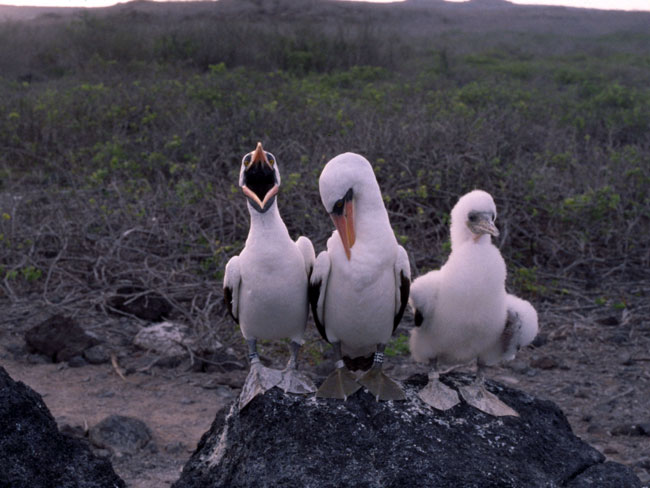Female Boobies Dump the Best Males

Raising kids is hard. For men, it can be bewildering. For male boobies, it's downright thankless. Male Nazca boobies, long-living birds in the Galapagos Islands, can't even expect a Father's Day card, because being a better dad is likely to get them booted right out of the nest. The female Nazcas have their pick of guys, and so they tend to seek a mid-life avian divorce in search of a new fling with a fresh face. “Our study population has 50 percent more males than females, creating the opportunity for females to trade a current mate, which may be worn-out from recent breeding effort, for a ‘refreshed’ non-breeding male,” said Terri Maness of Wake Forest University. The study is detailed in the June 13 issue of the Proceedings of the Royal Society B: Biological Sciences. Male and female Nazca boobies share the task of raising chicks. The egg is incubated 43 days, and it takes up to four months after hatching before a young one can fly. If the rearing wears a male out, the female is likely to pick another mate. In a study of 700 females spanning 14 years of data, more than half took new mates. “This study really predicts that the probability of divorce increases with the birds’ success at breeding and raising a chick, because the effort required may tire out the male and consequently his mate may reject him,” Maness said. She found, though, that a rejected male might then rest up and get back in the mating game the next year.
- Mating Game: The Really Wild Kingdom
- Meet the Bluebirds: Wealth, Nepotism and Ungrateful Offspring
- Wild Sex: Where Monogomy is Rare
Sign up for the Live Science daily newsletter now
Get the world’s most fascinating discoveries delivered straight to your inbox.
Robert is an independent health and science journalist and writer based in Phoenix, Arizona. He is a former editor-in-chief of Live Science with over 20 years of experience as a reporter and editor. He has worked on websites such as Space.com and Tom's Guide, and is a contributor on Medium, covering how we age and how to optimize the mind and body through time. He has a journalism degree from Humboldt State University in California.











